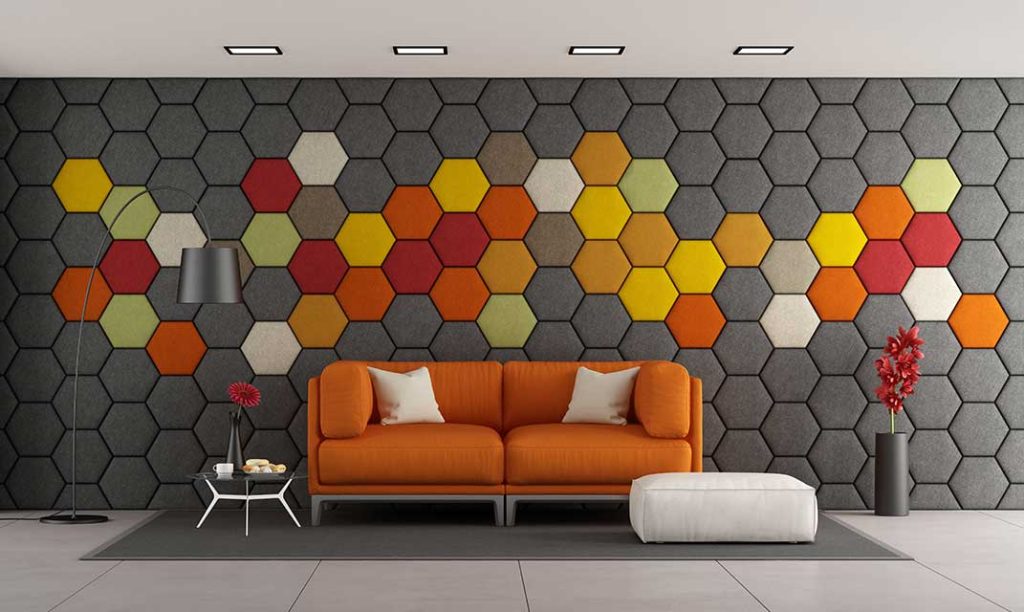As our modern lives become increasingly filled with noise from various sources, the need to create quieter and more comfortable spaces is becoming more apparent. Whether it’s a bustling office, a recording studio, or a cozy home theater, unwanted noise and echoes can be distracting and even detrimental to our well-being. This is where acoustic panels come into play, providing an effective solution to manage sound in various environments.
Types of Acoustic Panels
Acoustic panels come in a variety of types, each designed to address specific sound-related issues. Fiberglass Panels are among the most common types and are known for their excellent sound absorption properties. They are typically used in recording studios and theaters to eliminate echoes and improve sound clarity. Foam Panels, on the other hand, are lightweight and versatile, making them suitable for both commercial and residential spaces. They are often used in home theaters and home offices to enhance the overall sound quality.
How Acoustic Panels Work
The science behind acoustic panels revolves around their ability to absorb sound waves. These panels are made from materials that effectively convert sound energy into heat, reducing the sound’s intensity and preventing it from bouncing off surfaces. Mineral Wool Panels, for instance, use dense fibers to trap sound waves, while Microperforated Panels feature tiny holes that allow sound to pass through, where it’s absorbed by a layer of material behind the perforations.
Benefits of Using Acoustic Panels
The benefits of incorporating acoustic panels into your space are numerous. Improved speech intelligibility is a primary advantage, making it easier to communicate even in noisy environments. Reduced stress and increased productivity are also notable advantages, as a quieter and more pleasant atmosphere can lead to enhanced focus and relaxation.
Applications of Acoustic Panels
The versatility of acoustic panels allows them to be used in a wide range of environments. In residential settings, acoustic panels can transform home theaters and living rooms into cozy retreats with exceptional sound quality. Commercial spaces, such as offices and restaurants, can benefit from reduced noise, creating more comfortable and customer-friendly environments. Even industrial settings like factories and manufacturing plants can utilize acoustic panels to mitigate noise pollution and improve worker conditions.
Choosing the Right Acoustic Panels
Selecting the appropriate acoustic panels for a given space requires careful consideration. The size of the room, its purpose, and the existing décor all play a role in the decision-making process. In larger spaces, bass traps may be necessary to control low-frequency sounds, while in smaller rooms, standard absorption panels might suffice.
Installation and Maintenance
Installing acoustic panels is a straightforward process. Begin by identifying the areas with the most significant sound issues, such as walls and ceilings. Mount the panels using appropriate hardware, ensuring they are evenly spaced for optimal sound distribution. As for maintenance, regular cleaning with a soft brush or cloth can keep the panels looking and performing their best.
DIY Acoustic Panels
For those who enjoy hands-on projects, creating DIY acoustic panels can be a rewarding endeavor. To make your own panels, you’ll need basic materials like wood frames, acoustic fabric, and insulation. The process involves constructing the frames, attaching the fabric, and adding the insulation. DIY panels not only offer cost savings but also allow for customization to match your space’s aesthetics.
Top Acoustic Panel Brands
Several brands specialize in manufacturing high-quality acoustic panels. Auralex Acoustics is well-known for its wide range of products suitable for various applications. Gik Acoustics offers both ready-made and customizable panels, allowing for personalized sound solutions. Primacoustic is another reputable brand known for its innovative designs and effective sound treatment solutions.
Cost Considerations
The cost of acoustic panels can vary significantly based on factors such as size, type, and brand. Basic foam panels are generally more affordable, making them a popular choice for budget-conscious consumers. However, investing in higher-end panels with advanced absorption properties can provide more substantial sound improvement in the long run.
Future Trends in Acoustic Panels
As technology continues to advance, the field of acoustic panels is also evolving. One emerging trend is the integration of smart acoustic panels equipped with sensors and control systems. These panels can adjust their properties based on the surrounding sound environment, offering real-time sound optimization. Additionally, researchers are exploring more sustainable materials for panel construction, aligning with the growing focus on eco-friendly solutions.
Conclusion
In a world where noise pollution is on the rise, acoustic panels offer an effective means of creating harmonious and comfortable spaces. From enhancing sound quality to improving the overall aesthetics of a room, these panels play a crucial role in modern interior design. Whether you’re seeking to transform your home theater or create a more peaceful office environment, the versatility and benefits of acoustic panels are undeniable.
FAQs About Acoustic Panels
Are acoustic panels only suitable for music studios?
No, acoustic panels are versatile and can be used in various settings, including homes, offices, restaurants, and more.
Can I install acoustic panels myself?
Yes, many acoustic panels are designed for easy installation, and DIY options are also available.
Do acoustic panels completely eliminate all sound?
While acoustic panels significantly reduce unwanted noise and echoes, they may not eliminate all sounds entirely.
What is the lifespan of acoustic panels?
With proper care and maintenance, acoustic panels can last for many years, providing long-lasting sound improvement.
Can I paint acoustic panels to match my room’s décor?
Yes, many acoustic panels can be painted or covered with fabric to match the room’s aesthetics.

